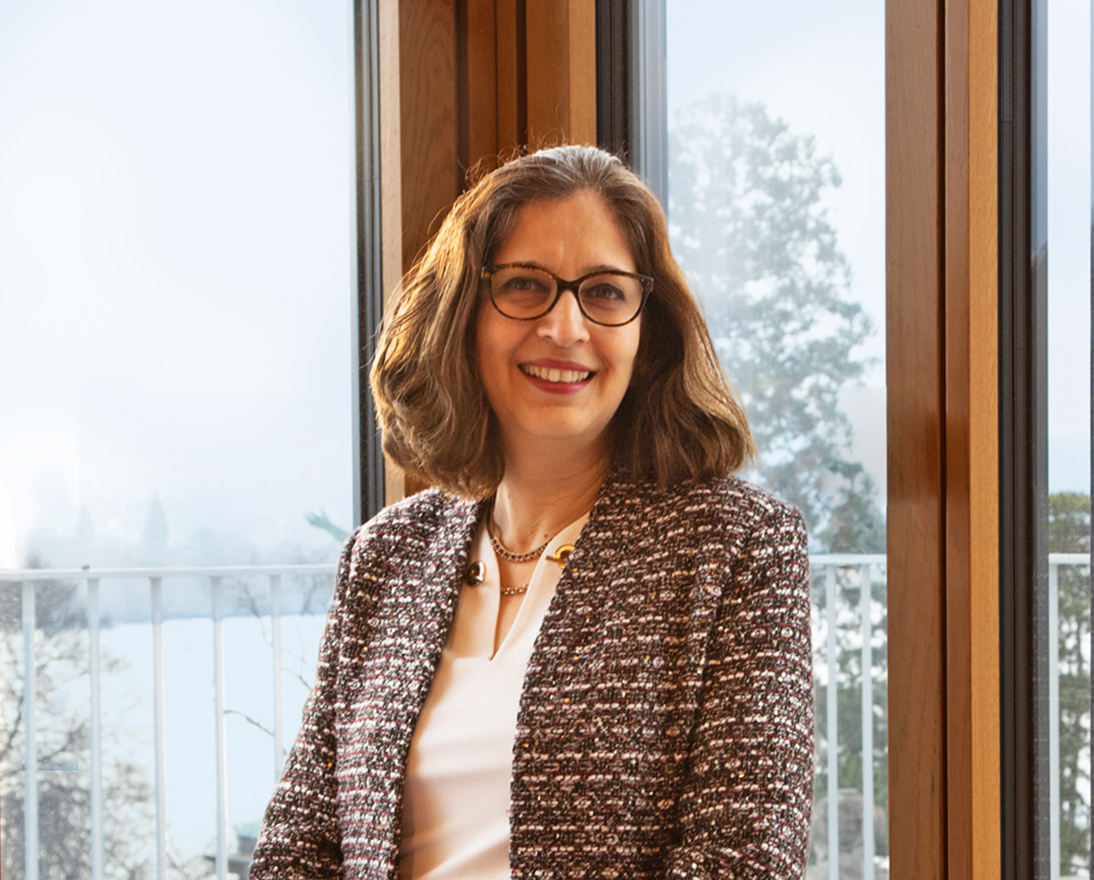How do entrepreneurs innovate?
TechnologyArticleJune 4, 2023
Where do entrepreneurs find inspiration and great ideas? Innovative startups give the lowdown on their creative journeys.
Have you ever had a lightbulb moment? When your entrepreneurial mind goes into overdrive and a great idea develops in your head. Suddenly, you clearly see how to tackle a problem or invent a new product or service.
The origins of innovation can lie in the most unexpected of places. For some, a hunch nags like an itch until they’ve found a game-changing solution. That’s the case with Ray Schmitt, a scientist at the Woods Hole Oceanographic Institution.
Seven months after the Mississippi and Missouri river floods of 1993, Ray was intrigued by the abnormally low salinity in the Gulf of Mexico and Gulf Stream. It set him wondering about the connection between the two.
Weather forecasts are generally accurate for two to 10 days. Longer-term predictions are commonly based on the El Nino phenomenon, a warming of the surface waters of the Pacific Ocean but they’re somewhat hit and miss.
“I wondered if variations in ocean salinity could be used to forecast rainfall on land more accurately,” says Ray. “A large area of ocean has to lose fresh water to evaporation to supply the floods on land. That evaporation would have to make the ocean surface saltier than usual.”
For years Ray worked on his hunch, and co-authored studies with colleagues, accurately predicting seasonal rainfall in regions ranging from the African Sahel to the U.S. Midwest. However, there was little funding available, and few other scientists were prepared to give it the time of day.
That all changed when a colleague passed on details of a government-sponsored competition aimed at providing the most accurate rainfall predictions over a whole year for the U.S. West. For every two weeks, contestants would have to predict the total rainfall amount in all the regions of the West for weeks three to six in the future.
Ray enlisted the help of his identical twin sons, Eric, a mechanical engineer who happened to be interested in artificial intelligence (AI), and Stephen, a computer programmer (pictured above). It proved a winning constellation.
They built their rainfall model throughout 2017 with Eric designing the AI algorithms and Stephen coding it up. The team began submitting forecasts in April 2017.
“When the first scores came in, we knew we were onto something,” says Ray. “We were in first place, a position we held throughout virtually every week of the contest.”
During the course of the year, they blew the competition out of the water, including professional forecasting companies. Salient Predictions was born.
Three-week to three-month weather predictions are known as sub-seasonal to seasonal forecasts. Salient believes it has the most accurate long-range forecasts even up to 52 weeks in advance.
From farmers to city planners, businesses to wildfire fighters, almost all segments of the population can benefit from better predictions of droughts, floods and hurricanes.
A life-changing event
When Gino Bustamante lost control of his car driving back from the beach and went over a cliff, little can he have known that the event would define his career path.
He made a claim with his insurance company and slowly the bureaucratic wheels began to turn. Not only was the process slow and cumbersome, but Gino was also dismayed by what he perceived as a lack of empathy.
“Instead of trying to understand and be sympathetic to what I was going through, they kept asking me questions about papers and documents that I couldn’t even get hold of since everything was scattered everywhere.”
Challenged by the manager of an insurance company with whom he discussed his situation to improve the experience, he got to work on an automated claims settlement process. It was the starting point of LISA Insurtech.
“The first step involved once a loss is reported is to establish whether the circumstances are covered under the policy,” says Gino. “It is during this process that we find the greatest number of dissatisfied clients, given the lack of visibility of the settlement process, generating great frustration.”
The reduction in time taken to settle a claim helps to reduce operating costs and increase customer satisfaction.
Life and death decisions
“For almost seven days, my family and I were forced to live on our roof as floodwaters destroyed our community,” says Ahmad Wani, CEO of One Concern, recalling his experience in Kashmir in 2014.
“Nearly 85 percent of the region was under water and many people lost their lives and loved ones. This inspired me to think more about disaster prevention, advanced warnings and ultimately climate change, which is the cause of many of these events.”
Trained as an earthquake engineer, Ahmad decided to dedicate himself to building long-term resilience to natural disasters. While at Stanford University, he met AI engineer Nicole Hu and earthquake scientist Tim Frank, and together they figured out how to improve models that could predict climate-related disasters more accurately. This ultimately developed into their proof of concept that led to the launch of One Concern in 2015.
Combining ground truth data with machine intelligence, One Concern generated the first synthetic digital twin of U.S. infrastructure. It maps buildings to lifelines – everything from airports to power substations and highways.
“Where data doesn’t exist or is too old, incomplete or missing, we fill in the gaps by using AI to generate the missing data. We can use the synthetic data to create more precise predictions through modeling to identify and better understand vulnerabilities.”
Users of the platform can clearly visualize how climate change will impact their assets and networks and therefore better incorporate climate and natural disaster resilience into their valuation and risk processes.
The third edition of the Zurich Innovation Championship began in November 2021. It received 2,762 entries that were whittled down to the 12 global winners. Working with Zurich’s Business Unit leaders across various countries, they took part in a 13-week accelerator phase to test and validate their solutions with the aim of scaling their initiatives across the group in the autumn. “The symbiosis of Zurich’s strength with the creativity and agility of a startup is key to reimagining insurance,” says Joel Agard, Innovation Director, Zurich Insurance Group.
It’s a secret
Ideas can sometimes die a thousand deaths but for entrepreneurs, it is not uncommon for their original concept to mutate into something completely different. That’s what happened to Ofer Tziperman from Tel Aviv, Israel, and his co-founders at Anagog who were interested in solving the problem of on-street parking but were rapidly drawn into the debate about privacy and data collection.
“We ended up tackling the much bigger problem of how you can respect the privacy of users but still target them with hyper-personalised marketing,” says Ofer. “We realized that if we manage to find a solution to this problem, it could have an enormous impact on almost all industries that maintain a mobile app.”
Edge AI technology, so-called because the AI computation is done close to where the data is located, rather than centrally in a cloud computing facility or private data center, allows an individual’s phone to learn about its user and then pull relevant offers for its owner without disclosing his/her identity.
That allows you to keep all your personal data on your phone and retain control of what you allow to be shared.
Some 25 patent filings later, the company has a sophisticated AI engine that can run on the phone, with a battery consumption of less than one percent. This gives companies a chance to craft deeply personal experiences for consumers to increase engagement but respects the growing desire for privacy.
“We make it totally unnecessary to give our most private secrets to large corporations, which will use (and sometime abuse) them for profit,” says Ofer. “Personal data belongs to the individual. We allow brands to serve you in a personal way without knowing who you are. That’s a huge revolution!”
Brainwave in a bar
Quite a few startups begin life as a brainwave in a bar but that fails to acknowledge the years of graft that convert a cracking concept into something concrete.
That’s the case with the easy warranty hub, Garanteasy, designed to put an end to forgotten, lost or misunderstood warranties. Its digital platform streamlines the process for retailers, e-commerce, manufacturers, insurers, service providers and, of course, consumers.
Using Garanteasy e-Warranty service, all warranty documents, invoices, receipts and product information are automatically uploaded and made accessible to users on their private area of the platform. Later, the platform can warn about deadlines and product maintenance schedules and enables easy support requests in case of defects or damage.
CEO Carmela Magno says the myth of founding a startup can sometimes trivialize years of hard work.
“The idea really did begin as a bar discussion but that masks the long history of in-depth analysis, tests, prototypes, mistakes and fine-tuning before the Garanteasy project was born,” she says. “And without the involvement of experts in multiple fields, it is hard to create something that can really change the business rules of the market, as Garanteasy is trying to do in the warranty ecosystem.”
Inspiration means nothing if it’s not allied to passion and perseverance. It seems there’s no escaping the graft to bring the germ of an idea to gestation.


